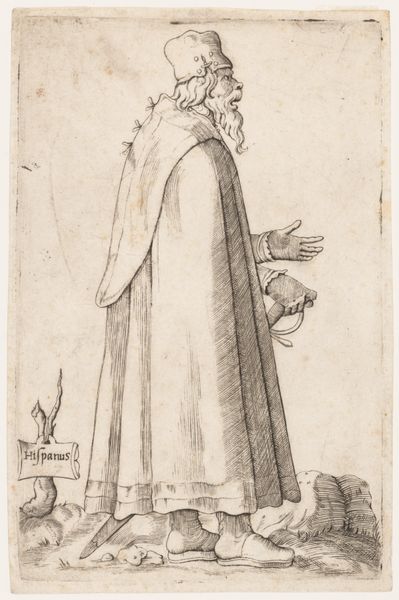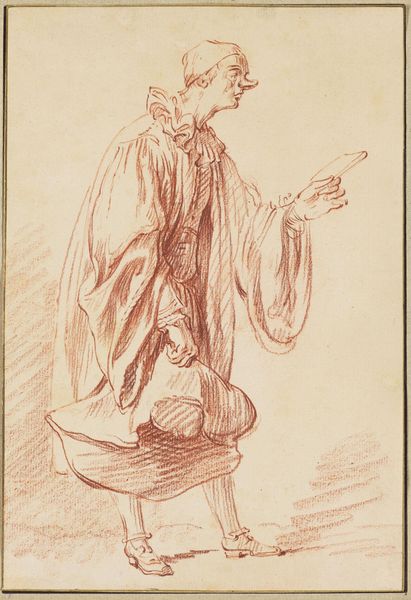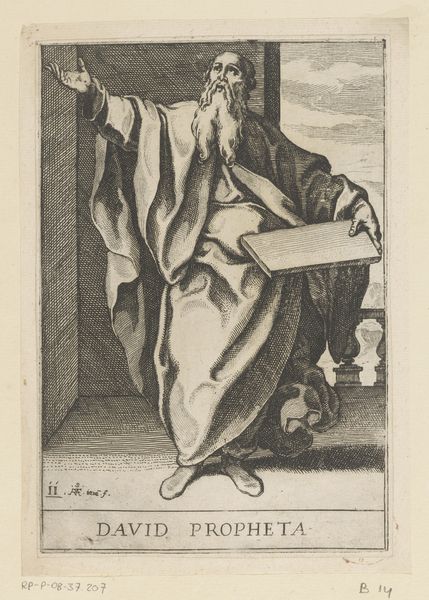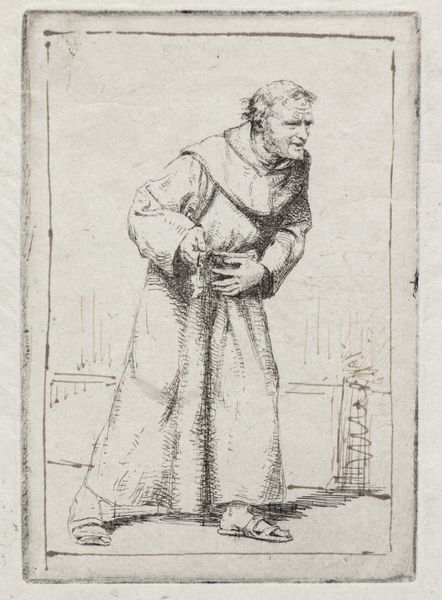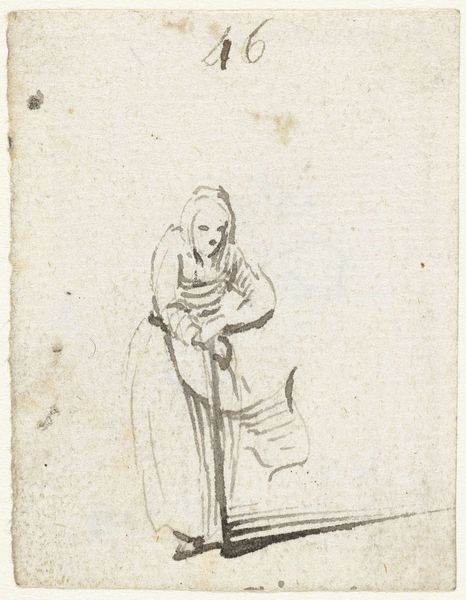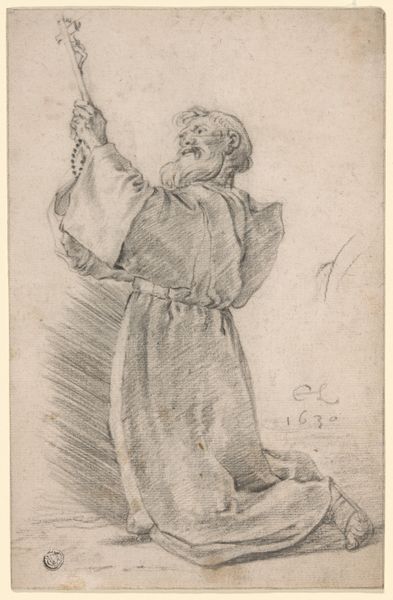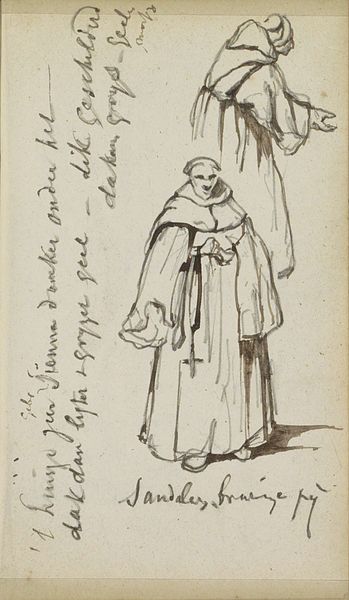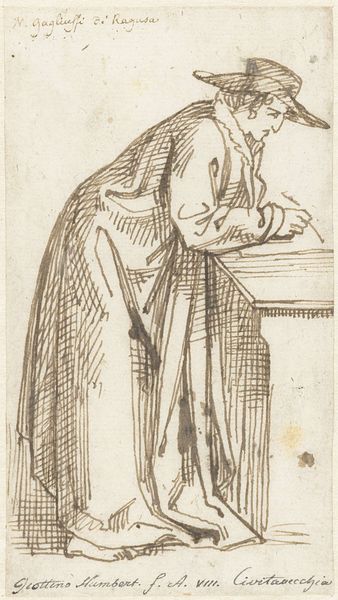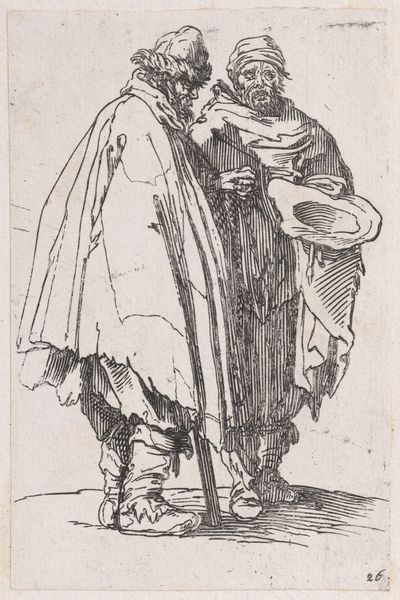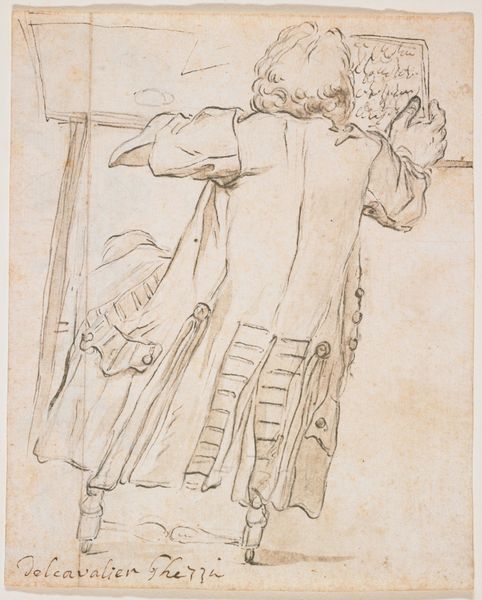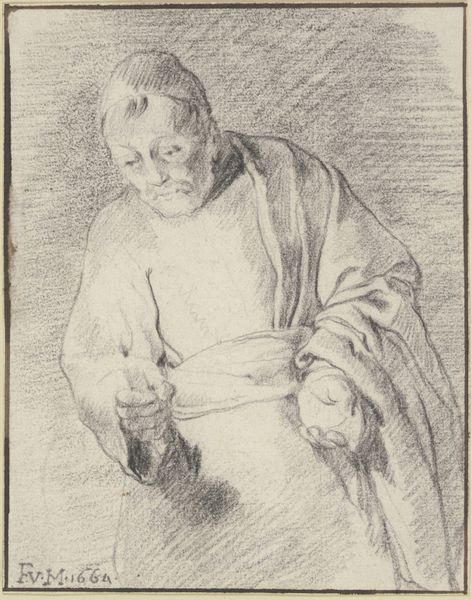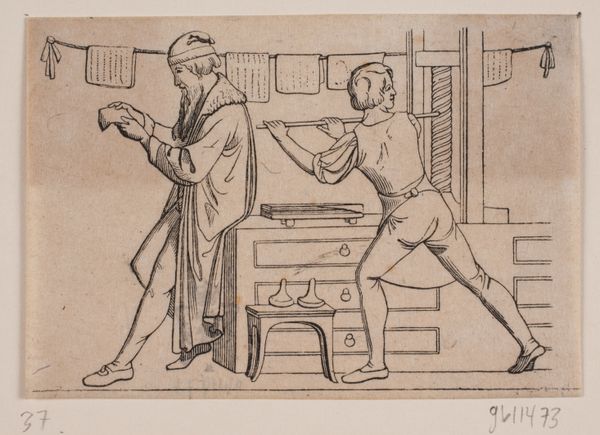
drawing, ink, pen
#
portrait
#
drawing
#
baroque
#
figuration
#
ink
#
men
#
pen
#
genre-painting
Dimensions: 10 9/16 x 7 11/16 in. (26.8 x 19.5 cm)
Copyright: Public Domain
Curator: This is Giuseppe Maria Crespi’s "A Monk Preaching," a 17th-century drawing rendered in pen and ink. It's currently part of the collection here at the Metropolitan Museum of Art. Editor: What strikes me immediately is the dynamism captured in such simple lines. The upward gesture, the turned head, it all suggests fervent speech and intense emotion. But below him at the lower side, the tiny people heads lying on the ground seem unimpressed, disconnected. Is this really a preacher filled with zeal or just a vain man showing himself? Curator: That's an interesting contrast you point out. Crespi, an Italian artist associated with the Baroque movement, often infused genre scenes with social commentary. The figure, likely a member of a monastic order given his garb, certainly commands attention within the composition. Editor: Indeed. That extended hand is archetypal for blessing or for swearing, while looking up. Perhaps he is making an appeal to the Divine? However, these hand gestures combined with the few attendees evoke something other than a man really concerned about their salvation, at least from today's point of view. Curator: His technique further emphasizes this. Note the swift, assured lines which brings us in mind the works of Salvator Rosa, yet another baroque Italian painter known by his quickly sketched bandits and soldiers and a painter who explored questions on power. Editor: The figures look detached from the sermon but they share the same earth tones in a very humble context, suggesting we are dealing with a moment of preaching in poor houses or in the streets of some town. Maybe those three heads below represent the only hope to continue his preaching. Curator: Crespi worked in a context marked by Counter-Reformation ideals. Artists were encouraged to produce works that were legible, persuasive, and emotionally resonant, in alignment with that era's renewed spiritual fervor. Editor: It brings into focus questions about rhetoric and faith, and the tension between genuine belief and performative piety, things very needed nowadays, centuries later. Crespi captures that complex dynamic with compelling brevity and candor. Curator: Precisely. Examining it through Crespi's position in 17th-century Bologna opens our eyes to these multiple and varied readings, allowing us to question and understand the complex nuances of religious imagery, and baroque social life.
Comments
No comments
Be the first to comment and join the conversation on the ultimate creative platform.
